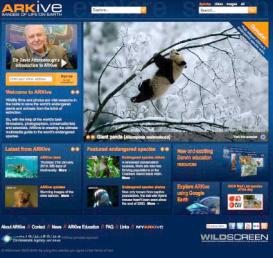During his stay Jean-Baptiste Gouyon investigated ARKive, an Internet database of images and recordings of animals, the associated claims to knowledge, and how they appear to be supported (www.arkive.org). This collection of audiovisual material is presented as an "electronic Noah’s Ark," a central repository whose civic usefulness is justified by the threat of extinction looming over several, if not all animal species in the catalog. Embedded in this enterprise is the notion that wildlife conservation rests on a number of indisputable epistemological foundations. As a result, ARKive encapsulates several assumptions about the relationship between humans and animals, foremost amongst which are the ideas that, first, to act for the "greater good" (however defined) of animals is always to act for the best, and second, that the best kind of knowledge of animals is that which derives from visual observation. At work in this database is a conception of animals as ineluctably doomed creatures. But ARKive also seems to foster the notion that natural history film-making is a culture of knowledge production, the films being presented as precious objects of knowledge in need to be saved from destruction for this very reason. The research therefore examined the role that such "ecology of doom" plays in bringing cognitive legitimacy to natural history film-making, most notably through the role ascribed to the archival potential of this set of material practices. The research also aimed to participate in current interrogations regarding the epistemological status of visual representations, allowing an evaluation of the way natural history film-making meshes with other practices of knowledge production, to fashion a vision of the natural world, and bring further rational support to the political project of wildlife conservation.

